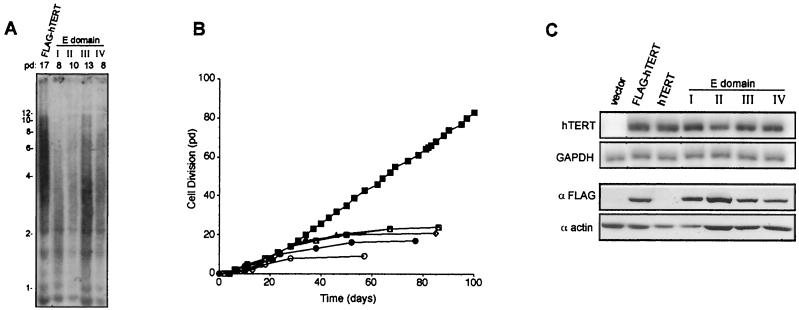FIG. 3.
Class one mutants are biochemically and biologically inactive. (A) C-terminal regions E-I, -II, -III, and -IV are essential for telomere maintenance. Telomere length of DNA isolated from cells expressing FLAG-hTERT, or NAAIRS mutants +998, +1034, +1088, or +1118 representing each of the four regions E-I, -II, -III, and -IV, was determined by Southern hybridization with a telomeric probe.(B) HA5 cells expressing hTERT containing a NAAIRS mutation in one of the four essential regions are mortal. Cell divisions in pds versus time in days is plotted for HA5 cells infected with FLAG-hTERT (▪), an empty vector (•), or the aforementioned representative FLAG-hTERT-NAAIRS mutants for E regions I (○), II (□), III (▵), and IV (⋄). (C) Mutations in regions E-I, -II, -III, and -IV do not alter RNA or protein levels of hTERT. Total RNA prepared from the same aforementioned cell lines, or the control HA5 cells stably expressing untagged hTERT, was RT-PCR amplified with primers specific for hTERT or GAPDH. Protein lysates prepared from 293 cells transiently transfected with an empty (vector) mammalian expression vector or one encoding FLAG-hTERT, hTERT, or representative FLAG-hTERT NAAIRS mutants for each of the four essential regions were resolved by SDS-PAGE and Western blotted with an anti-FLAG or antiactin antibody.

